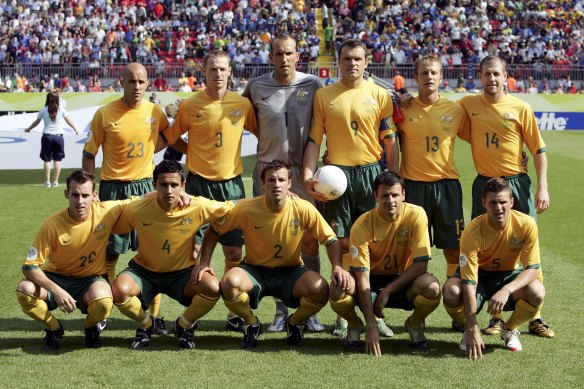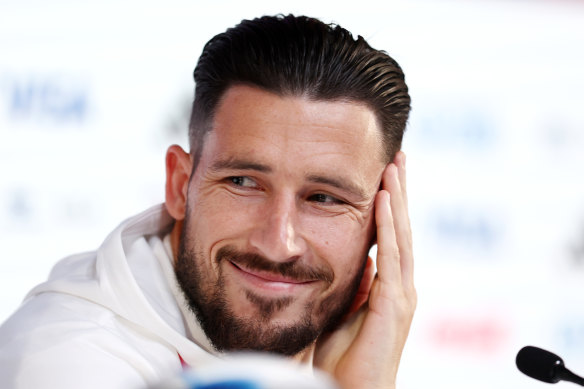
Doha: As with so many Australian kids, the feats of the ‘golden generation’ at the 2006 World Cup in Germany were a seminal moment in the life and times of Mathew Leckie.
Had Tim Cahill not struck twice against Japan, had John Aloisi not sealed that magical first win in Kaiserslautern, had Harry Kewell not scored the late goal that secured a draw with Croatia and a spot in the round of 16, Leckie might be kicking a ball of a different shape.

The ‘golden generation’ made it into the round of 16 at the World Cup in 2006 - now the kids they once inspired are in the Socceroos and could be about to match them.Credit:Getty
“The World Cup and us Socceroos really bring the nation together,” the Melbourne City winger said.
“When I was younger, growing up in an AFL environment with my family, one thing that did bring my family to follow football was the national team and the World Cup.
“It’s huge for the sport ... I’m sure when [kids] watch the telly, they see the atmosphere and how big the World Cup is, it could be just one of those things that clicks in their head and says ‘I want to be a footballer’, rather than an AFL player or something like that.”
Sixteen years on, Leckie and his teammates — all of whom, save for one or two with a Scottish accent, were also inspired by that 2006 run — have the opportunity to match the achievements of their heroes and influence a whole new generation of aspiring footballers.

Mathew Leckie grew up in an AFL family, but the power of the Socceroos and the World Cup shaped his athletic future.Credit:Getty
It’s been a lean few years for Australian football. Unlike 2006, there are very few male players breaking through into any of Europe’s top five leagues, the development pipeline has dried up, the Socceroos lost some of their lustre in the eyes of the general public after struggling through two arduous World Cup campaigns without success at the tournament proper, and the A-League’s appeal — both domestically and abroad — has dropped away as a result.
All along, bigger, better-funded sports have had first crack at the country’s best young athletes, and football has had to make do with what was left over, or the precious few who swum against the tide.









 Add Category
Add Category